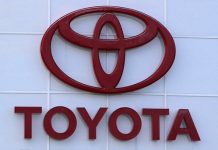One of the city’s biggest infrastructure projects this year will be along Rocky Ford Road, between Taylor and Talley roads.
Bike lanes, curbs, gutters, storm sewers, sidewalks and a new bridge are planned in the $6.3 million improvement for the former county road, said Dave Hayward, executive director of public works/ city engineer.
Three traffic lanes will be developed on Rocky Ford, with one of them a shared turn lane, compared to two lanes currently, he said.
A stretch of Rocky Ford from Central Avenue to Taylor Road already has been widened, also receiving new curbs and gutters, Hayward said. A side path has been developed on the north side, while portions of sidewalks have been put into place on the south side.
[sc:text-divider text-divider-title=”Story continues below gallery” ]
Hayward said many of the developments in Columbus have been in the northeast portion of the city, which continues to experience growth.
“We’re trying to keep up with the future demand in the area,” Hayward said.
Work on the project is expected to be completed by the fall.
Federal funding is covering 80 percent of the project’s cost, with the remaining amount being picked up by the city.
Signal coordination
The city plans to coordinate traffic signals at Seventh, Eighth and 10th streets and Central Avenue. Signals at 17th Street and in front of the Cummins Columbus engine plant on Central Avenue are also being evaluated, Hayward said.Miovision Spectrum System equipment, being utilized in the pilot program, allows information such as traffic flow to be remotely accessed, Hayward said. The cost of the system is about $5,000 per intersection.
Hayward said the traffic-signal coordination will help transport goods and people from one part of the city to another more efficiently. The Miovision Spectrum System can also be moved to other intersections as needed, Hayward said.
Data has been collected since January during peak travel hours that will ultimately help the city determine how it wants traffic signals to function, Hayward said.
The city will also consider making changes to traffic signals at other corridors such as 25th and Washington streets to keep traffic moving, he said.
Stop sign replacements
The replacement of nearly 1,200 stop signs throughout the city is planned this year. The upgraded stop signs will be more reflective to the general public, Hayward said.The federal government will cover 90 percent of the $202,000 price tag, with city monies paying for the rest.
Sidewalk improvements
Work has already started on a sidewalk improvement project on Marr Road.The $25,474 project will connect existing sidewalks to new ones with 610 feet of new sidewalks constructed, Hayward said.
The work, being done on the south end of Indiana Avenue near Columbus East High School, will connect to existing sidewalks and extend north to McKinley Avenue and 10th Street.
The number of apartment complexes and schools in the area resulted in the project being developed, he said.
“We knew there was some demand for pedestrian traffic,” he said.
Crossing signals
The city is implementing pedestrian crossing signal upgrades that are meant to improve intersections and meet requirements under the Americans with Disabilities Act, Hayward said.The pedestrian crossing projects, which carry a price tag of $181,000, will take place at four intersections:
7th Street and Central Avenue
17th Street and Central Avenue
5th and Brown Streets
25th Street and Haw Creek Avenue
Road widening
Work will begin next month on a road-widening project on County Road 450S to help with traffic flow, Hayward said.Half of the $383,000 project is being paid by the city’s redevelopment office, while the remaining portion will utilize state economic development funds, he said.




